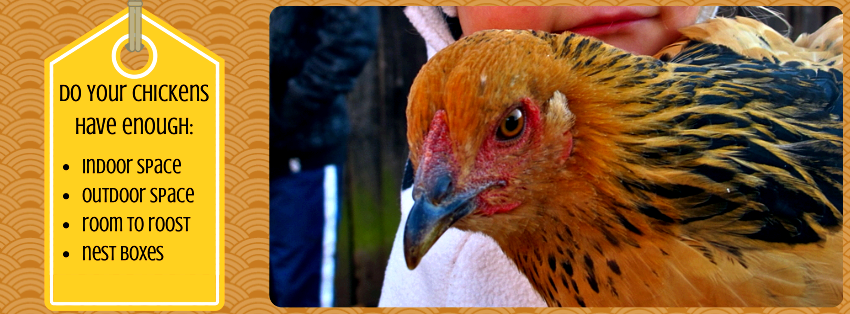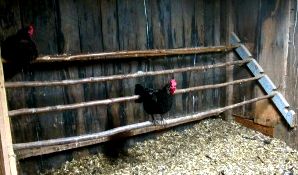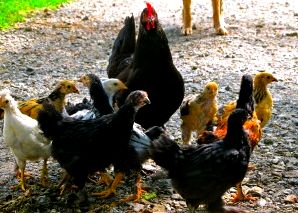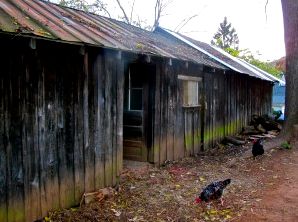Navigation article:

I really like chickens. I really like watching them chase one another for treats. I really like watching them catch June bugs within the summer time. I really like what their manure does in my garden. My children love chickens too. They love their old hens around they love the lovable, fluffy chicks. However if you simply are simply getting began with chickens and therefore are starting to plan your chicken house, there’s a couple of chicken house requirements you will have to remember.
When creating a chicken house you have to bear in mind certain needs:

You might also need to make certain that the coop includes a couple of certain elements to make sure that your hens stay healthy and happy. When building your coop you need to think about the next questions:
May be the coop:
- Ventilated enough?
- Secure against predators and rodents?
- Protected against moisture?
Your Chicken House Requirements:
Size up!
When building your chicken house, size is among the first things you should think about. And just how much space do chickens need?
For the standard breeds you’ll need a the least 4 sq. foot. per bird. If you’re able to do more- I am certain they’ll understand the room! Bear in mind that you’ll be also including nest boxes and roosting areas, so don’t scrimp with regards to space.
A location to put!
Nest boxes really are a must within the chicken house! Your hens will push and shove one another daily to have their preferred lounging place. However in general you would like your nest boxes to become roughly 12’x12′ and also you want enough boxes to ensure that there’s 1 for each 3 lounging hens. You may be as creative as you want for the nest boxes.
I’ve come across 5 gallon buckets on their own sides, milk crates, re-purposed shelves or dressers. I actually have a Pinterest board focused on nest boxes! But to warn you, and this is also true in case your chickens the opportunity, chickens will lay where they need. They might decide it normally won’t much like your nest boxes and discover one that they like better-such as the goats’ hay or underneath the tiller within the outdoor storage shed. I’ve discovered the more private you are making the nest boxes the greater that they like them.

A crib!
Roosts are another chicken house should have. Chickens don’t sleep on the floor. They enjoy being up in mid-air, so you will have to give a space to allow them to roost once they go to sleep every night. When adding your roosts you need to have a couple things in your mind:
- Roosts ought to be a minimum of one foot from the wall. This gives them space for his or her mind or tail to hold off easily.
- Give a minimum of a few ft between your uppermost roost plus they ceiling so your wild birds don’t chance striking the ceiling when jumping as much as their roosts.
- When calculating just how much roosting room you’ll need, estimate a minimum of one foot of space per bird.
Roosts can be created out of virtually anything- but avoid slippery plastic like PVC pipe and when you opt for a square board you will need to across the corners a little therefore the chickens can wrap their ft around them easily.
Air to breathe!
Ventilation is definitely an frequently overlooked a part of coop design, but additionally an essential factor to keep in mind. Chickens make lots of dust and between their manure, the bedding, the down, and all sorts of scratching they are doing outdoors is really a necessity to safeguard their lung area. There’s a noticeable difference between getting a properly ventilated coop along with a drafty coop.
Ventilation is essential to produce ventilation and permit the “soiled air” out and outdoors in. Make sure to leave some openings round the coop- home windows or across the eaves from the roof. Be sure that you secure the openings with chicken wire or hardware cloth to ensure that predators can’t make their way inside.

Safety first!
When your coop is finished, check it for just about any areas that could allow other creatures in. What this means is gaps or holes that are adequately sized for small creatures for example snakes or rats in addition to bigger predators for example opossums or raccoons. Make certain all large openings are engrossed in some kind of wire which small areas are generally covered or blocked.
A great guideline is when a 3-year-old can open it up, so can a raccoon. So make certain all door latches are “child-proof”! Your feed storage space is yet another target for undesirable visitors. Don’t leave feed bags open, store your enter a covered container. We store all ours in metal trash cans with very super tight covers. Besides this prevent rodents from invading, additionally, it prevents moisture from reaching the meals.
This is a great time to make certain your coop is water-tight. Make certain the rooftop is nice, the floors won’t leak which heavy wind won’t cause rain to drip using your ventilation holes.

Room to operate!
The ultimate a part of coop planning is outdoors of the particular coop. The way your chickens spend time outdoors will be based greatly on where you reside and the number of predators are in your town. Your choices include:
- Free-range
- Pastured
- Run
Our current chickens have the freedom-range. It normally won’t possess a fence and can roam our entire property…and sometimes the neighbor’s too….In TN, we’d over an acre of land, however in a subdivision. There our chickens were pastured within our backyard. These were found in our fenced back-yard with this dogs..and finally the goats too.
Related Studying: The Benefits and drawbacks of The Opportunity Chickens
If you reside in the town or get this amazing trouble with predators a covered run may well be a better fit for you personally. If you’re planning a run, allow it to be large enough to provide each bird no less than 10 sq. foot each.
Again, this can be a minimum, and much more room is definitely better! Particularly if there’s an opportunity you’ll increase the chickens later. And when there’s one factor I’ve learned- there’s always an opportunity of adding more wild birds later!
That’s it- 6 chicken house most important items to maintain your wild birds happy, healthy and lounging lots of tasty eggs!
Tags: chicken, house, requirements, things
Comments are closed here.

